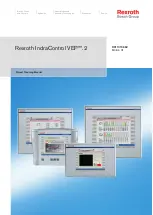
7
5.3 Connecting communication links
1. Connect the France-Inter/DCF radio-synchronization antenna to concentrator block
[B5]. The link with the antenna is a 4-20
mA current loop. The current supplied by the
terminal is limited to 50
mA. The maximum voltage supplied is 14.5
V
DC
.
2. Connect the RS232 line from the PC to the terminal on concentrator block [B6] as
shown on figure below:
3. Connect the event-driven RS485 line [B7] to the other peripherals such as Kelio Visio
(depending on software configuration).
4. Connect the polling RS485 line [B8] to the peripherals such as attendance boards, Kar
readers, GPS receiver (depending on software configuration).
5. Connect the alarm cable to concentrator block [B9]. The two contacts of the alarm
signal are intended to be connected to an external dry contact (typically the contacts of
a fire alarm system relay).
6. In the event of an RTC modem option, connect the telephone cable to RJ11 connector
[D] or concentrator block [E].
7. Connect the Ethernet 10/100
Mb cable to concentrator block [G].
8. Secure the cables using the tightening collars [R].
9. Put the protection plate back into place [C].
10. Re-install the front panel at the back of the terminal.
11. If necessary and before closing the casing, power
up to adjust/configure the terminal (see page 8 in
these instructions).
12. Remove the protection sheet from the front.
13. The terminal is ready to be used.
5.4 Reader's connection
Wired reader
Connect the reader to the USB port on the activity V
ISIO
.
Wireless reader
Connect the reader support to the USB port on the activity V
ISIO
.
Follow the start-up instructions for the wireless reader provided with it.
DB9 connector to the
PC
Terminal
C
t t bl k F
Shunter DSR (6)
and DTR (4) to
inhibit the flow
t l
R
R
R
R








































